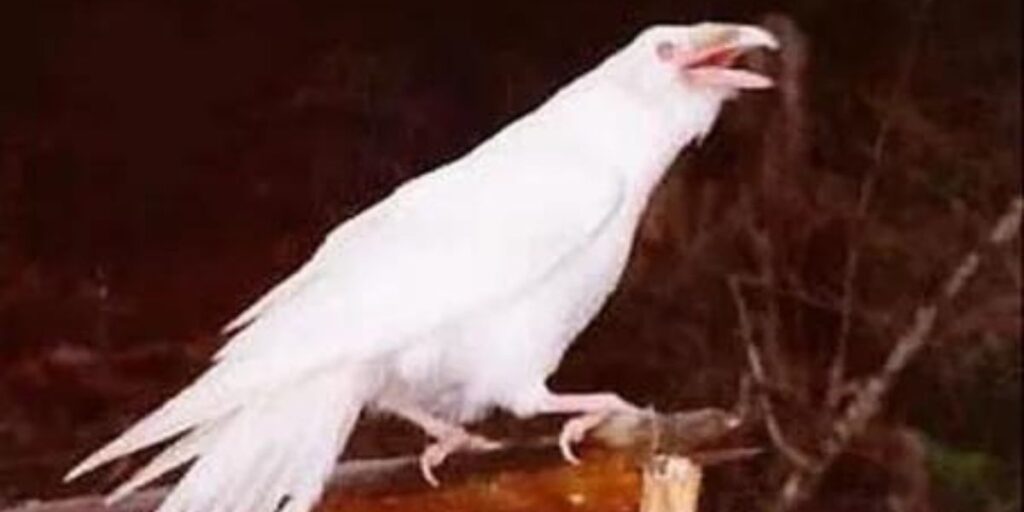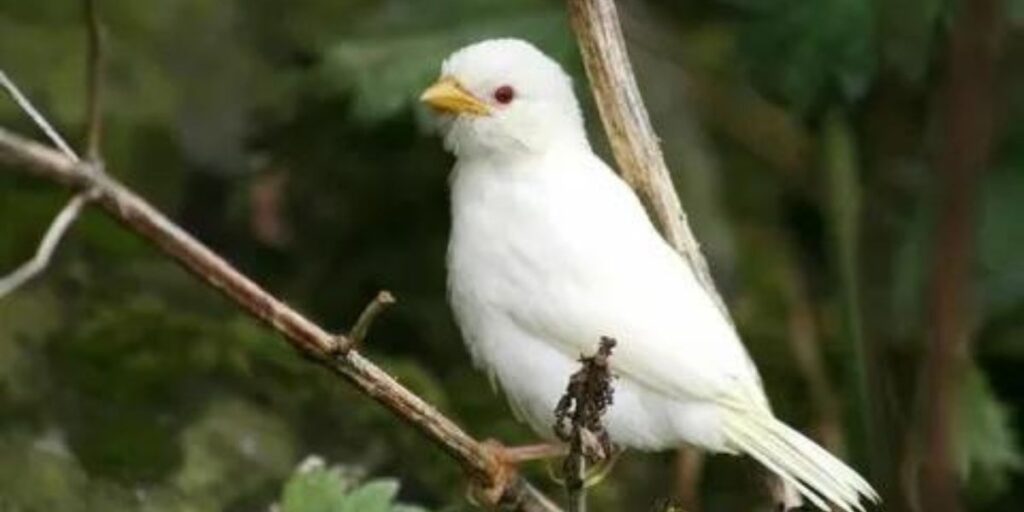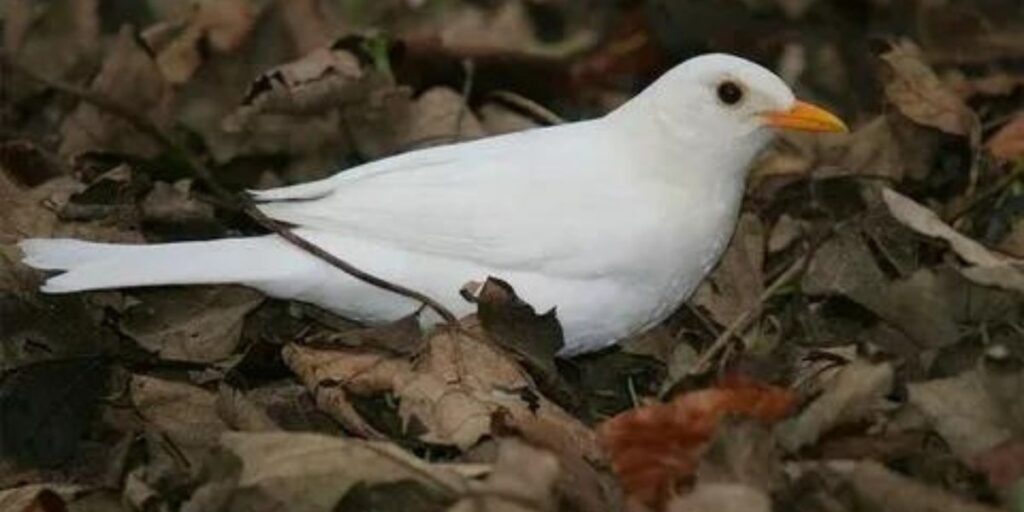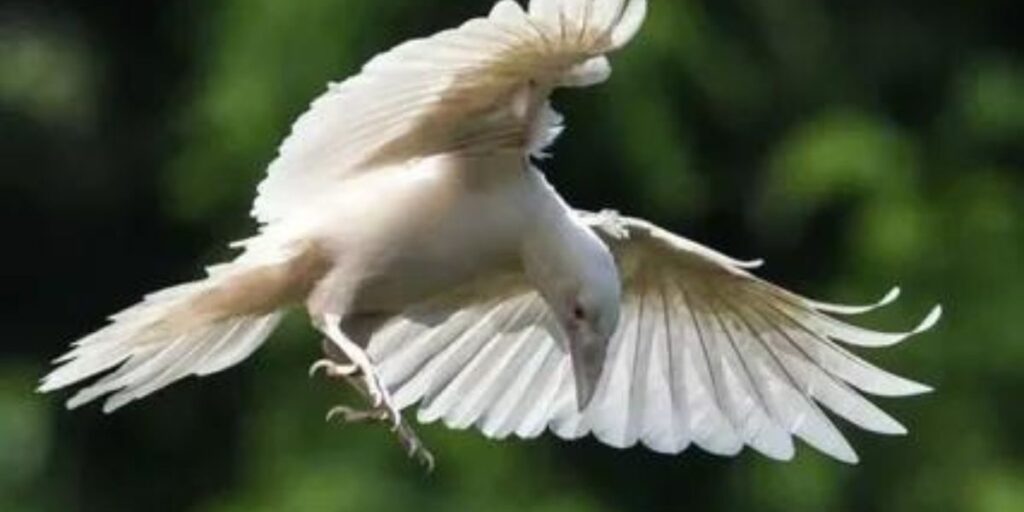Albino crows, often referred to as white crows, have long captured the human imagination due to their striking appearance and rarity. Characterized by their compensatory lack of pigmentation, these white crow birds serve as powerful symbols across various cultures.
In many traditions, they embody purity and transformation, representing a break from conventional norms or expectations. Many wonder if there are white crows in nature beyond mere mythology; indeed, these remarkable creatures exist but remain exceedingly rare due to genetic mutations.
The allure of white crows transcends their visual appeal; they are steeped in rich folklore and spiritual significance. For instance, in some Native American cultures, the presence of a white crow bird is seen as an omen or heralding change—imbuing hope and renewal in times of strife.
What Are Albino Crows?

Albino crows, often referred to as white crows, have sparked fascination and intrigue in both birdwatchers and casual observers alike. The striking appearance of these birds—characterized by their snow-white feathers and ruby-red eyes—sets them apart from the typical black crow species we encounter regularly. But are there white crows in nature? While sightings are rare, they do occur occasionally due to a genetic condition known as albinism, which affects pigmentation.
The existence of a white crow bird challenges our understanding of avian life and adaptation in the wild. These extraordinary creatures not only captivate photographers with their unique aesthetic but also raise questions about survival strategies within their darker feathered communities. For instance, how does being a white crow impact its ability to blend into its surroundings and evade predators?
The Science Behind Albinism
Albinism is a fascinating genetic condition resulting from a lack of melanin, the pigment responsible for coloring skin, hair, and eyes. This phenomenon isn’t limited to humans; it also occurs in various animal species, leading to rare occurrences like white crows. While many might be surprised by the existence of such creatures, they are indeed the avian counterparts of those with albinism. The striking appearance of these “white crow bird” variants raises questions about their adaptations and survival in environments that typically favor darker plumage for camouflage.
| Normal Crow | Albino Crow |
|---|---|
| Black Feathers | White Feathers: While normal crows boast lustrous black feathers and dark eyes, albino variants wear a coat of pure white feathers and often have red or pink eyes. |
| Dark Eyes | while red or pink eyes can sometimes be spotted, hinting at genetic anomalies or distinctive adaptations. |
| Often Seen | Rarely Seen |
The Meaning Behind Albino Crows

The meaning behind albino crows transcends the mere existence of these rare white crow birds. Throughout history, white crows have often been perceived as symbols of purity and transformation, standing in stark contrast to their traditionally dark-feathered relatives. This striking visual anomaly invites curiosity and reflection on the nature of uniqueness in wildlife—especially when one considers the question: are there white crows? The answer lies not only in biology but also in folklore; many cultures attribute mystical significance to albino animals, viewing them as omens or messengers from another realm. Lets I tell you the most Ugliest Birds in the World, explore the journey with me.
- Messages from Beyond: Many believe that these ethereal creatures carry messages from the spirit world and act as guides during significant life transitions.
- Change and Transformation: The appearance of white crows captivates those who witness them, often leading to pondering deeper meanings. These rare birds are seen as omens; their very presence can signal significant changes on the horizon.
- Purity and Uniqueness: When you encounter a white crow bird, it symbolizes not only transformation but also purity and uniqueness in a world filled with conformity. The meaning behind albino crows transcends mere biology.
Albino Crow Symbolism In Different Cultures
In the tapestry of world cultures, white crows emerge as enigmatic symbols that often evoke deep reflection. While many cultures view crows as harbingers of mystery or transformation, the presence of a white crow bird can shift this narrative entirely. For instance, in some Native American traditions, these rare avian wonders represent purity and enlightenment, guiding individuals toward clarity in times of confusion. Their striking color challenges the conventional prowess attributed to their darker counterparts, reframing our understanding of what it means to be a guide in life’s journey.
Conversely, in Chinese folklore, traditional black crows symbolize misfortune; however, when one encounters an albino variant—wondering, are there white crows?—it may signal unexpected blessings on the horizon.
This duality exemplifies how perceptions can change based on context and culture. Similarly, ancient Greek mythology weaves tales where Apollo’s anger turns a white crow into black feathers as punishment for disobedience; yet even amidst this loss lies a lesson about strength and resilience that resonates through the ages. The meaning behind albino crows, then, extends beyond mere color—they encapsulate themes of transformation and renewal across various cultures.
The Myths Around Albino Crows
The fascination with white crows can often lead to misconceptions that have persisted through generations. One major myth is that these stunning birds sometimes referred to as white crow birds, possess magical properties or foretell misfortune, much like their black-feathered counterparts. However, the truth about albino crows lies in their rarity and the biological implications of albinism. Instead of embodying bad luck or being omens of doom, they serve as incredible reminders of nature’s diversity and the genetic variations possible within a species.
Many still question: are there white crows? This inquiry stems from folklore and anecdotal sightings rather than scientific observation. True albino crows are exceedingly rare due to the specific genetic mutations required for such coloring; thus, some individuals might mistake leucistic crows—those with partial loss of pigmentation—for true albinos. By delving into the meaning behind albino crows, we unveil an opportunity to appreciate their uniqueness rather than fear it;
Fascinating Albino Crow Stories

Fascinating albino crow stories have sparked intrigue and wonder among various cultures. The rare sight of white crows captivates those fortunate enough to encounter these unique creatures in the wild. Often mistaken for mythical beings, the appearance of a white crow bird can evoke deep emotions and interpretations. Many ask, Are there white crows? The answer is both simple and complex; while genetic mutations leading to albinism are indeed rare in birds, they do exist, creating an air of mystery surrounding their presence.
Beyond their unusual pigmentation lies a deeper significance: *the meaning behind albino crows* touches on themes of individuality and rarity in an often homogeneous environment. They become symbols for those who embrace their differences against societal norms—much like how people sometimes feel out of place yet strive to shine brightly in their way. As stories surface about encounters with **white crows**, they unfold narratives of resilience and strength—the very essence that defines what makes us all unique beings navigating through life’s complexity.
Spotting An Albino Crow
Spotting an albino crow is a rare occurrence that captivates birdwatchers and casual observers alike. These exquisite white crows captivate the imagination, with their striking appearance standing in stark contrast to the typical glossy black feathers of their kin.
Eager enthusiasts often ponder, Are there white crows? The fascination lies not only in their rarity but also in the symbolism attached to these unusual birds, which many cultures view as omens or guardians. Do you know the bird Pet Raven? Before exploring the idea of having a pet raven, read this to get more info.
The meaning behind albino crows can vary greatly depending on cultural context, yet they often evoke a sense of wonder and intrigue. While some regard them as symbols of purity or transformation, others see them as harbingers of change.
Where To Find Albino Crows

Understanding where to find albino crows also involves knowledge of their habitats. These striking creatures are more than just unusual sightings; they symbolize uniqueness in nature that prompts questions—are there white crows in your area? Observing them can lead you on an adventure through various ecosystems and may uncover unexpected stories about local biodiversity. Keep your eyes peeled during brisk morning walks or while enjoying a quiet afternoon at any secluded spot where food and safety abound.
Conservation and Care
Conservation and care are pivotal in ensuring that unique species like albino crows thrive in their natural habitats. These extraordinary white crows stand out not only for their striking appearance but also for the genetic rarity they represent. Much of the fascination surrounding “what does a white crow symbolize” lies in cultural interpretations of rarity and purity; beyond symbolism, these birds face real threats due to environmental changes and habitat loss. Engaging local communities in conservation efforts can diversify understanding and encourage respect for these rare creatures.
Helping Albino Crows Survive

Albino crows are often seen as rare anomalies in the avian world, their striking white feathers standing out against the rich tapestry of nature. Beyond their captivating appearance, these white crows face significant challenges that can affect their survival.
- Many people may wonder, what does a white crow symbolize? In various cultures, they represent purity and transformation; however, this beauty is overshadowed by the stark realities of predation and environmental pressures that threaten their populations.
- To help albino crows thrive in their ecosystems, targeted conservation strategies are essential. These include creating safe habitats that shield them from predators and human disturbances while incorporating community engagement to raise awareness about these unique birds.
- By fostering a greater understanding of why there are white crows in our midst—along with an appreciation for their symbolism.
Final Thoughts
Albino crows represent a fascinating intersection of nature’s beauty and the complexities of genetic variation. Their striking white feathers and captivating red eyes not only set them apart from their more common counterparts but also highlight the importance of biodiversity and the need for conservation efforts. As we continue to study these unique birds, we gain valuable insights into the effects of environmental factors on animal populations and the significance of genetic diversity in ecosystems. By raising awareness about albino crows and their habitats, we can foster a greater appreciation for wildlife in all its forms. Let us commit to protecting these remarkable creatures and their environments, ensuring that future generations can marvel at their rarity and beauty.
Discover what makes Mypricezone a favorite among shoppers. User reviews and ratings offer genuine insights into the shopping experience. From product quality to customer service, learn what others have to say.
FAQs:
What Do Albino Crows Symbolize?
Yes, while regular crows symbolize transformation and intelligence, albino crows can represent purity, rarity, and a break from tradition.
Are Albino Crows Common?
No, albino crows are extremely rare due to the genetic mutation that causes albinism.
What is the significance of albino crows in various cultures?
Due to their unusual appearance, albino crows are often seen as omens or symbols of bad luck, but they can also represent purity and uniqueness in some traditions.


